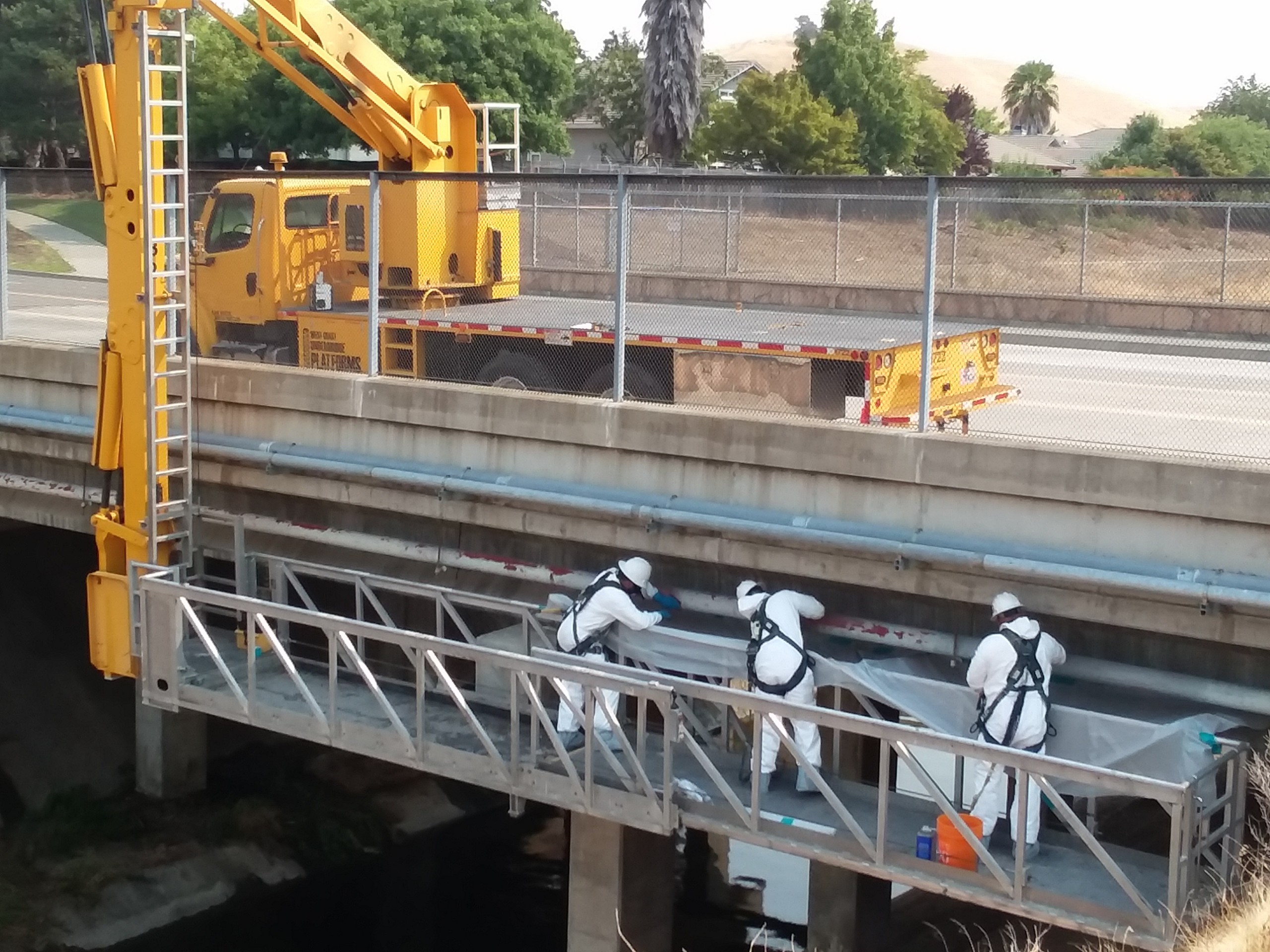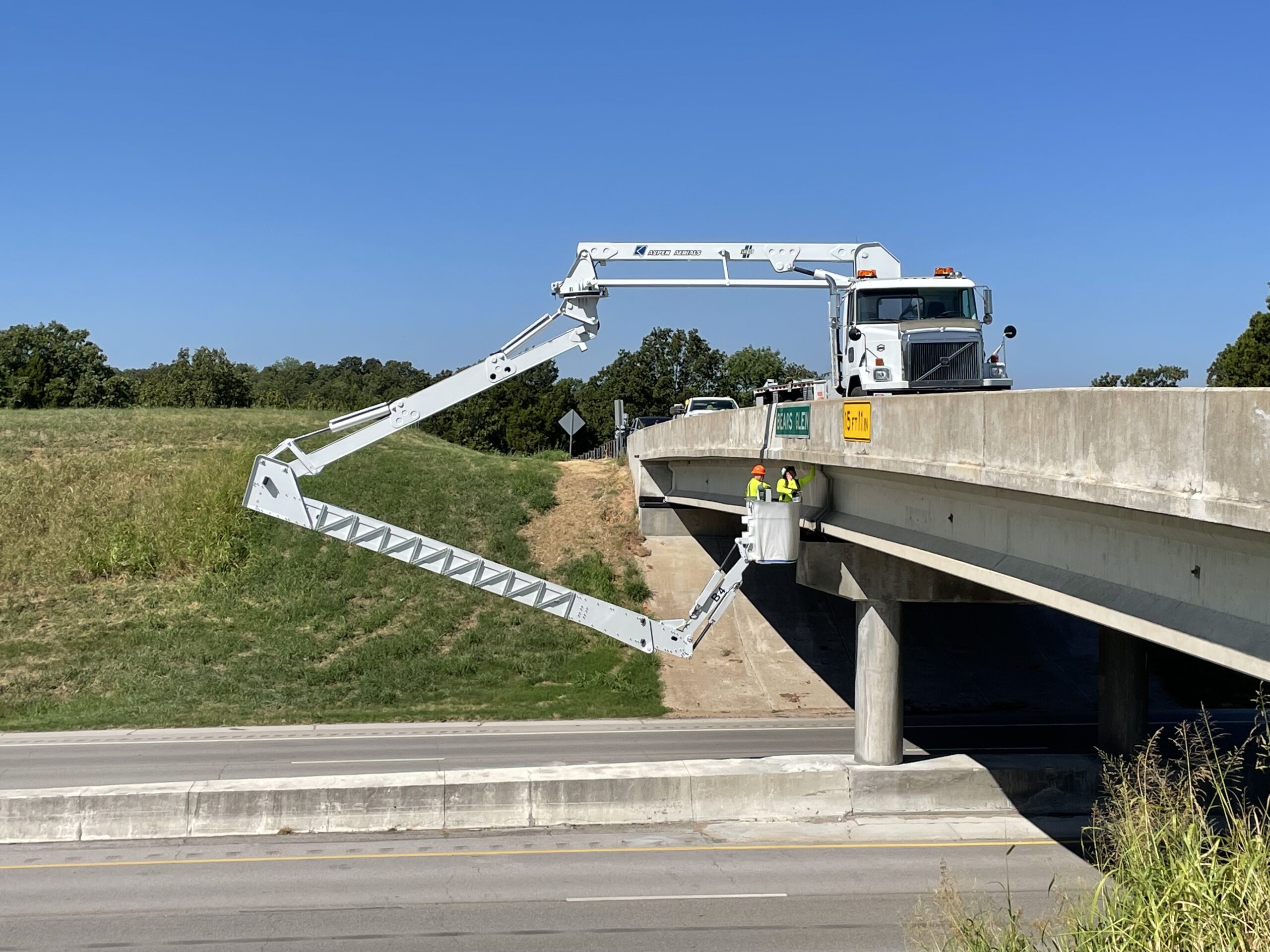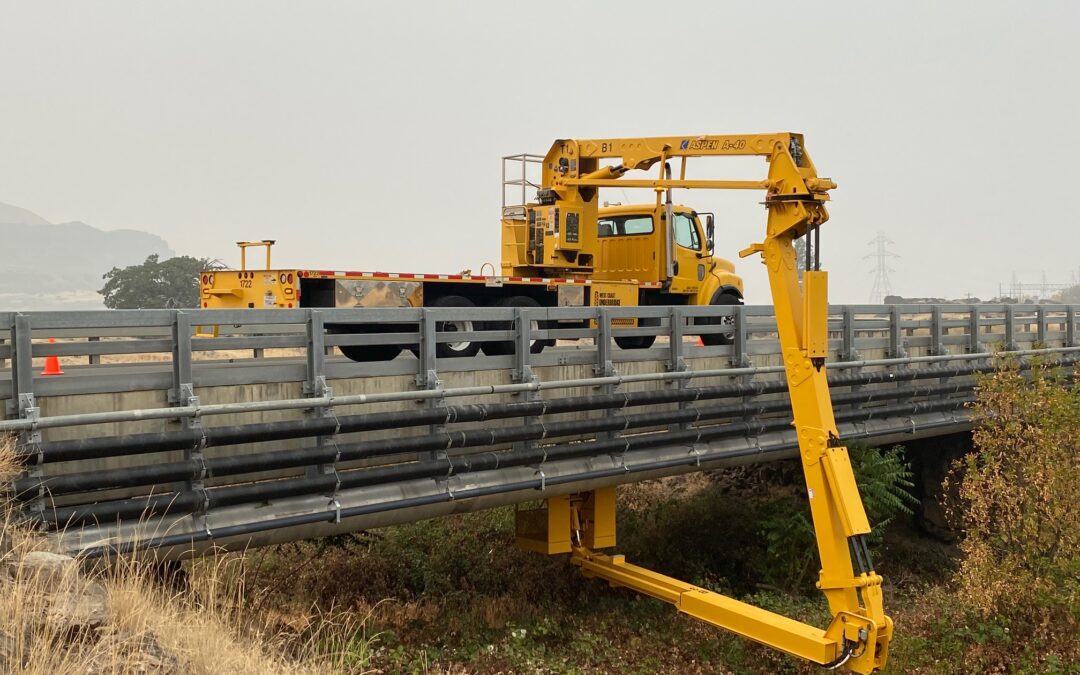Bridge maintenance and repair are essential for ensuring public safety and infrastructure longevity. Gaining efficient and safe access to the underside of bridges is a critical component of these operations. Traditionally, scaffolding and rope access techniques have been employed, but a newer method, under bridge platforms, has been gaining traction over that last few decades.
When it comes to infrastructure maintenance, inspection, and repair – particularly for bridges – choosing the right access method is crucial for efficiency, safety, and cost-effectiveness. Traditional methods like scaffolding and rope access have been industry standards for decades, but under bridge platforms are becoming increasingly popular as an alternative.
Read on to learn the advantages and disadvantages of under-bridge platforms compared to traditional access methods, helping project managers and engineers determine the most suitable option for their specific needs.

Traditional Access Methods
Scaffolding and rope access have been the industry standards for bridge maintenance for many years. While they offer certain advantages, they also come with inherent challenges.
Scaffolding
Scaffolding involves erecting temporary structures to provide a stable platform for workers. This method has been used for centuries and remains a common approach for bridge work.
Advantages:
- Stability and Workspace: Scaffolding provides a stable and expansive work area, which is especially beneficial when handling heavy equipment or when multiple workers need to perform tasks simultaneously.
- Safety: The rigid structure of scaffolding makes it one of the safest options, reducing the risk of falls and allowing for more secure placement of tools and materials.
- Versatility: Scaffolding can be customized for various bridge designs and can cover large areas, allowing for work on different sections simultaneously.
- Cost-Effectiveness: Relatively lower cost, which is suitable for smaller projects.
Disadvantages:
- Time-Consuming Setup: The process of erecting and dismantling scaffolding is labor-intensive and time-consuming, often leading to significant project delays.
- Cost: Due to the extensive labor required, scaffolding can be expensive, especially for complex bridge projects that require customized setups.
- Space Limitations: In densely populated areas or over waterways, erecting scaffolding can be challenging and may obstruct traffic or other activities beneath the bridge.
Rope Access
Rope access techniques involve technicians using harnesses and ropes to access hard-to-reach areas. This method is widely used in industries requiring quick, mobile access, like wind turbine maintenance or bridge inspections.
Advantages:
- Flexibility: Rope access is ideal for reaching confined spaces or areas with irregular shapes that are difficult to access using scaffolding or platforms.
- Speed: Compared to scaffolding, rope access is quicker to deploy and creates less minimal impact on traffic, making it suitable for projects with tight deadlines.
- Lower Cost: Rope access generally requires less equipment and manpower, leading to lower overall costs.
Disadvantages:
- Limited Workspace: Rope access is not ideal for tasks requiring heavy tools or equipment since workers are limited to what they can carry with them.
- Higher Skill Requirement: Technicians must be highly trained in rope access, which can lead to a shortage of available workers or higher labor costs.
- Safety Concerns: While rope access is considered safe when performed by trained professionals, the reliance on ropes and harnesses leaves little room for error. Adverse weather conditions or unexpected equipment failures can lead to serious risks.
A Modern Approach to Under Bridge Access
Under-Bridge Platforms
Under-bridge platforms are mobile units that can be extended beneath a bridge to provide a stable work surface. These platforms are either truck-mounted or self-propelled and can be adjusted to various heights and angles. They eliminate the need for scaffolding or rope access, offering several key benefits.
Advantages:
- Efficient Access: Under-bridge platforms are specifically designed to navigate the unique challenges of bridge maintenance. They can be quickly positioned and extended to the desired location, reducing setup time compared to scaffolding.
- Improved Safety: Platforms offer a secure and stable surface, allowing workers to carry out tasks with minimal risk. Guardrails and other safety features further enhance worker protection.
- Increased Mobility: Platforms can be easily moved along the length of a bridge, enabling rapid access to different sections without needing to dismantle and rebuild structures like scaffolding.
- Space Efficiency: Platforms do not obstruct the area below the bridge, making them ideal for projects over busy roads or waterways where minimizing disruptions is key.
- Reduced Traffic Disruptions: Platforms often require less road closure time compared to scaffolding, minimizing traffic congestion.
- Weather Resistance: Many platforms are designed to withstand various weather conditions, allowing work to continue even in adverse weather.
- Versatility: Platforms can be customized to suit different bridge sizes and project requirements
Disadvantages:
- Initial Investment: While platforms save time, their upfront cost can be higher than traditional methods. Purchasing or renting the equipment involves significant expenses.
- Access Limitations: Platforms may struggle with bridges that have complex designs, tight curves, or limited clearance. In such cases, scaffolding or rope access may be more effective.
- Specialized Operation: Operating an under-bridge platform requires trained personnel, adding another layer of complexity to project planning and execution.
Comparing the Methods
The choice between under-bridge platforms, scaffolding, and rope access largely depends on the specific needs of the project.
In summary, here’s a quick comparison:
| Criteria | Scaffolding | Rope Access | Under-Bridge Platforms |
|---|---|---|---|
| Setup Time | Long setup and teardown time | Quick deployment | Fast positioning |
| Cost | High due to labor and customization | Lower overall cost | High initial investment |
| Safety | High, with stable platforms | Safe but reliant on technician skill | High, with stable and guarded workspaces |
| Workspace Availability | Large, stable work area | Limited to technician mobility | Moderately large, mobile platform |
| Flexibility | Versatile but cumbersome in tight spaces | Highly flexible for confined areas | Limited in tight or complex designs |
| Mobility | Low, requires disassembly and reassembly | High, ideal for quick adjustments | High, with seamless movement along the bridge |
When choosing between under bridge platforms and traditional access methods, several factors must be considered:
- Project Scope: For large-scale, long-term projects, under bridge platforms often offer superior efficiency and safety. Smaller, shorter-term projects may benefit from scaffolding or rope access.
- Bridge Configuration: The bridge’s structure, size, and location will influence the feasibility of each option.
- Budget: Platforms can be a significant investment but may offer long-term cost savings through increased efficiency and reduced downtime.
- Safety: Under bridge platforms generally provide a higher level of safety, but proper training and adherence to safety protocols are essential for all methods.
- Environmental Impact: Rope access often has the smallest environmental impact, while scaffolding and platforms can vary depending on materials and construction methods.
Making the Case for Under Bridge Platforms
While there is no “one-size-fits-all” under bridge access solution, the under bridge platform can be said to be a superior choice for bridge inspections, repair and maintenance work, and other highway bridge access requirements.
When selecting the best access method for bridge maintenance, it’s essential to consider factors such as project size, budget, timeline, and specific challenges posed by the bridge’s design. Scaffolding remains a reliable option for large-scale projects requiring heavy-duty support. Rope access shines in scenarios that demand flexibility and quick mobilization. Under-bridge platforms offer a balanced approach, providing safety, mobility, and efficiency for a wide range of projects.
Ultimately, a hybrid approach might even be necessary, combining the strengths of different methods to optimize safety, efficiency, and cost. Understanding these advantages and limitations allows project managers to make informed decisions and ensure the success of their bridge maintenance initiatives.
The optimal access method for a bridge project depends on a variety of factors. Under bridge platforms offer significant advantages in terms of safety, efficiency, and reduced traffic disruptions, making them an attractive option for many projects. However, traditional methods like scaffolding and rope access still have their place in certain situations. Carefully evaluating project-specific requirements will help determine the most suitable approach.
By understanding the strengths and weaknesses of each method, project managers can make informed decisions to ensure the successful and safe completion of bridge maintenance and repair work.

Under Bridge Platforms Offers the Best in Bridge Inspection Equipment
The team at Under Bridge Platforms is proud to provide our clients throughout the Western States, including California, Washington, Oregon, Idaho, Nevada, Montana, and Wyoming with the very best in quality under bridge platform equipment.
Our expanding inventory of under bridge access platforms includes state-of-the-art bridge access platforms such as the massive DFM Bridgemaster-Art-B-4 or the versatile Aspen A-30 Unit.
With a professional firm you can rely on to guide you through the process, buying or renting the right under bridge inspection vehicle and bridge inspection platform equipment for your project means we are here to help you make the proper selection.
Contact us today and let us help you with your under bridge platform and bridge access needs.


Recent Comments